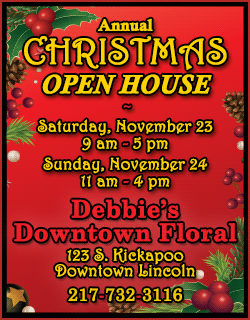About 1,500 migrants form a new caravan in Mexico. Here's what it means
 Send a link to a friend
Send a link to a friend
 [November 21, 2024] [November 21, 2024]
TAPACHULA, Mexico (AP) — About 1,500 migrants formed a new caravan
Wednesday in southern Mexico, hoping to walk or catch rides to the U.S.
border. The migrants are mainly from Central and South America. Some say
they are hoping to reach the United States before Donald Trump’s
inauguration in January, saying they think it might be more difficult
after that. They started out walking from the city of Tapachula, near
the border with Guatemala, where thousands of migrants are stranded
because they do not have permission to cross further into Mexico.
What are migrant caravans?
Migrant caravans began forming in 2018, and they became a final,
desperate hope for poorer migrants who do not have the money to pay
smugglers. If migrants try to cross Mexico alone or in small groups,
they are often either detained by authorities and sent back to southern
Mexico, or worse, deported back to their home countries. In that sense,
there is safety in numbers: it is hard or impossible for immigration
agents to detain groups of hundreds of migrants. So police and
immigration agents often try to pick off smaller groups, and wait for
the main body of the caravan to tire itself out. Usually the caravans
stop or fall apart within 150 miles (250 kilometers).

What are the obstacles?
There is no safety in numbers, however, against threats, extortion or
abduction by drug cartels in Mexico, which have become heavily involved
in migrant trafficking. The cartels charge migrants or their smugglers
for permission to cross their territories along the border. In addition,
the gangs often kidnap migrants, hold them in terrible conditions or
torture them until they call relatives to send money for their release.
The biggest obstacle, though, is the searing heat, dehydration and
distance: it is over 1,100 miles (1,780 kilometers) from Tapachula to
the nearest border crossing at Matamoros, across from Brownsville,
Texas. And that is the shortest, but also one of the most dangerous
routes. It would mean 16 days of straight walking even for an adult with
no rest stops; many of the migrants come with their children.
Why do they come?
Since migrants usually cannot find work to support themselves in
Tapachula, most of the foreigners trapped there are desperate to leave.
Some feel a sense of urgency, hoping to reach the border before Trump's
Jan. 20 inauguration.
“It is going to be more difficult, that's why we are going in hopes of
getting an appointment quicker so we are able to cross before he (Trump)
takes office,” said Yotzeli Peña, 23, a migrant from Venezuela. “That
would be easier.”
[to top of second column]
|

Migrants walk through Tapachula, Chiapas state, Mexico, Wednesday,
Nov. 20, 2024, hoping to reach the U.S. border. (AP Photo/Edgar H.
Clemente)

Weren't there changes to keep caravans from forming?
This year, in a bid to stop people from gathering at the border to
claim asylum, the U.S. government expanded areas where migrants can
apply online for appointments to enter the United States to a large
swath of southern Mexico.
The CBP One cellphone app was instituted to make asylum claims more
orderly. About 1,450 appointments are made available daily,
encouraging migrants to get an appointment before they show up at
the border. But the service was only available in northern and
central Mexico.
By extending the app south to Tapachula, officials hoped it would
stem the rush north. But some migrants still want to be close to the
border so that if they do get one of the cherished appointments,
they can get to it quickly and not risk missing it. Trump has
promised to end the app, reduce legal pathways to the U.S. and
organize mass deportations.
Do they ever reach the border?
The biggest caravans formed in 2018 and 2019, and back then Mexican
officials helped out some of the migrants by arranging buses to
border cities, but that created a backlash in those communities.
Groups from those original caravans did eventually reach the border.
In caravans since then, most participants have sought out as many
hitch-hiking or paid rides as they can, and often swarm empty trucks
to hitch a ride on empty freight platforms. But that has become much
harder as Mexican authorities discouraged buses, taxis and trucks
from stopping to pick up migrants. In recent years, authorities have
eventually offered temporary transit permits to dissolve the
caravans.
All contents © copyright 2024 Associated Press. All rights reserved
 |